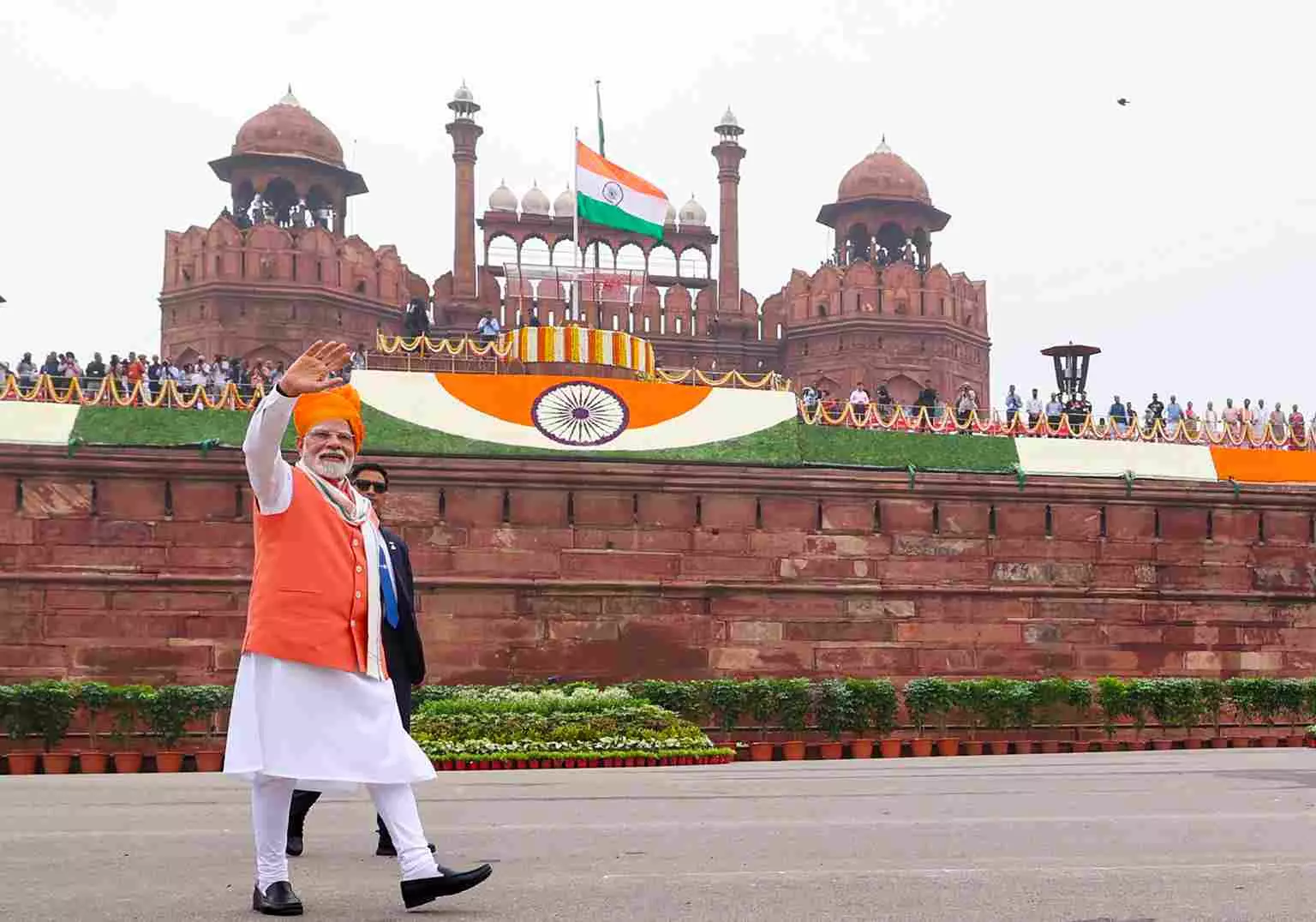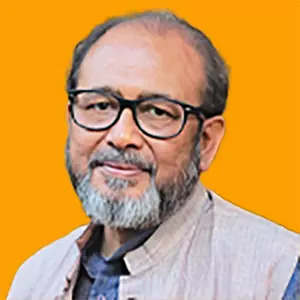
- Home
- India
- World
- Premium
- THE FEDERAL SPECIAL
- Analysis
- States
- Perspective
- Videos
- Sports
- Education
- Entertainment
- Elections
- Features
- Health
- Business
- Series
- In memoriam: Sheikh Mujibur Rahman
- Bishnoi's Men
- NEET TANGLE
- Economy Series
- Earth Day
- Kashmir’s Frozen Turbulence
- India@75
- The legend of Ramjanmabhoomi
- Liberalisation@30
- How to tame a dragon
- Celebrating biodiversity
- Farm Matters
- 50 days of solitude
- Bringing Migrants Home
- Budget 2020
- Jharkhand Votes
- The Federal Investigates
- The Federal Impact
- Vanishing Sand
- Gandhi @ 150
- Andhra Today
- Field report
- Operation Gulmarg
- Pandemic @1 Mn in India
- The Federal Year-End
- The Zero Year
- Science
- Brand studio
- Newsletter
- Elections 2024
- Events
- Home
- IndiaIndia
- World
- Analysis
- StatesStates
- PerspectivePerspective
- VideosVideos
- Sports
- Education
- Entertainment
- ElectionsElections
- Features
- Health
- BusinessBusiness
- Premium
- Loading...
Premium - Events

For the prime minister of a secular and democratic nation to lavish praise on the RSS for its “100 years of service” is little but a betrayal of his office’s non-partisan character
Prime Minister Narendra Modi’s laudatory reference to the Rashtriya Swayamsevak Sangh (RSS), the exclusionary organisation which politically incubated him in the early 1970s, during his address to the nation on the occasion of 78th anniversary of India’s independence from the ramparts of the historic Red Fort, underscores that despite fervent efforts over the past 11 years to give a veneer of statesmanship over his persona, at heart he remains little but a 'polarising politician' for who personal objective is more important than national purpose.
Also read | PM Modi's I-Day speech takeaways: Is it an olive branch to RSS?
With its baggage of a contentious and divisive past, the thrice-banned RSS completes a 100 years in existence in September, an occasion that may be a great matter of triumph and glory for the organisation, its two-score odd affiliates and swayamsevaks like Modi, but it is also a moment of trepidation for those who disagree with its tenets, codified as Hindutva.
Red Fort narrative shift
For the prime minister of a nation, enshrined as democratic as well as secular, to lavish praise on the RSS for its “100 years of service to the nation” is little but a betrayal of the non-partisan character of his office.
It is a well established fact that the RSS played no role in the Indian freedom struggle and was completely absent in the three ‘movements’ which rocked the British Empire and paved the way for India securing independence -- Non-Cooperation Movement in 1920-21; Dandi March followed by the Civil Disobedience Movement in 1930-31; and finally, the Quit India Movement launched in August 1942.
The most deplorable aspect of Modi’s unabashed eulogisation of RSS was that this was consciously made from the “ramparts of the Red Fort”, where the first Indian PM, Jawaharlal Nehru hoisted the national flag for the first time on August 15, 1947, and declared that an estimated one million Indians had gathered to watch the hoisting of the flag which did not “symbolise the triumph of individuals or the Congress, but the triumph of the whole country”.
In one flourish, undertaken with the intention to placate a rampant RSS leadership, Modi elevated the status of an ideologically partisan organisation into one that is national, benign and inclusive, poised to complete a “century-long journey of national service.”
From remorse to rhetoric
In contrast to Modi’s political intent, Nehru returned to the same venue a year later, on August 15, 1948, carrying a message of caution – not to always look at the half-full portion of the proverbial glass, but to be more focused on the container being half-empty.
On that occasion, Nehru had remarked that not only had the year which had gone past logged several achievements, but it had also been “full of unhappiness and humiliation and of a betrayal of the spirit that has been the redeeming feature of India”.
Nehru went on to explain that the past few months had been shrouded in extreme sadness because the period had “seen the triumph of evil in the assassination of the Father of the Nation, and what greater shame and sorrow could there have been for anyone of us than this?”
Importantly, when India marked this tragic yet redeeming I-Day commemoration, the RSS remained banned and several of its important leaders were still under arrest on suspicion of involvement in Mahatma Gandhi’s murder. It also remained an organisation that did not have any Constitution of its own.
In contrast to Nehru’s remorsefulness, Modi was unceasing in trumpeting the unidimensional perspective that he, the RSS and others in the saffron brotherhood share.
When diversity gets distorted
For starters, well past the halfway mark of his speech, Modi in this instance rightly claimed that “the strength of our culture lies in our diversity” and added that this is best reflected in “our great inheritance and our great pride”.
Also read | PM Modi’s I-Day announcements: Stronger national security, GST reforms, Rs 1-L Cr job scheme
But when it came to citing an example of India’s diversity, he stated that the people had seen this “at the ‘Maha Kumbh’ in Prayagraj, how Bharat’s diversity is lived — crores of people, united in one emotion, one spirit, one endeavour—something that appears truly wondrous to the world. The success of the ‘Maha Kumbh’ is a resounding testament to Bharat’s unity and strength.”
It is inappropriate to cite the Kumbh Mela, held earlier this year, as an illustration of India’s vividness because the festival is purely Hindu and completely religious. In a multi-faith country like India, despite Hindus accounting for almost 80 per cent of its populace, such an analogy is not just unacceptable, but also does not behove a premier, committed to ensuring that the faith and belief of no section of people is ever violated.
Giving primacy to Hindu traditions and mythologies while naming defence projects, instruments, shields, or operations is also what makes Modi’s announcement that India’s security shield for the future shall be drawn up by a yet-to-be-created 'Sudarshan Chakra Mission'.
By naming a mission to develop a powerful protective weapon system after Lord Shri Krishna’s mythical weapon shield, Modi has taken yet another step, after naming the recent attack on terrorist facilities in Pakistan as Operation Sindoor, towards diluting the multi-faith character of India’s defence services.
Demography Mission concerns
Furthermore, the prime minister rightly declared that India is “richly endowed with linguistic diversity”. But why refer to only the multiplicity of languages and not to the plurality of religions, which unfortunately are deeper markers in society? Is this because his government has taken steps to ensure parity for some languages even while Modi’s party and the entire Sangh Parivar remain disparaging towards all so-called non-Indic languages?
However, in case people had forgotten the government’s decision, Modi reminded them immediately that his government had “accorded classical language status to Marathi, Assamese, Bangla, Pali, and Prakrit.”
Further ahead in his speech, Modi also announced the decision to “launch a high-power Demography Mission.” Although its contours shall be known only in days or weeks to come, this is unabashedly a Sangh Parivar project for the past several decades, most pronouncedly from the late 1970s when the campaign against ghuspaithiyas (infiltrators) was first mooted by senior RSS leaders.
Modi “warned the nation” about a “grave concern and challenge” that “as part of a deliberate conspiracy, the demography of the country is being altered.” From the time the BJP began becoming a political force of significance, it has mounted a campaign against so-called ‘infiltrators’ (read Muslims) who “are misleading innocent tribals and seizing their lands.”
Politics shadows heritage
In recent weeks, we have seen a coordinated drive by the BJP and its affiliated organisations, backed by district administrations in BJP-ruled states, against people who speak Bangla and happen to be Muslims. The most worrisome aspect of this campaign is that any Bengali, regardless of place of residence, is no longer secure anywhere in India if she or he also has a Muslim name. Every Bengali Muslim is now labelled a Bangladeshi and an infiltrator or illegal immigrant.
It is worth recalling that in a very derogatory manner, Union Home Minister Amit Shah had infamously labelled such people as “termites”.
While the contours of the so-called Demography Mission shall be separately perused when announced, at the moment, this is nothing but another instance of the BJP’s dog-whistle politics. It is a grave tragedy for the nation that the prime minister resorted to such a tactic from a venue rooted in India’s heritage.
The legacy of India’s multi-dimensioned past is another matter that Modi referred to in his speech: “The biggest ornament, the biggest jewel, the biggest crown jewel of our identity is our heritage, we will be proud of our heritage,” he said.
When past gets politicised
In the context of India’s heritage, it is important to recall that Modi routinely declares the medieval period as a millennium-plus “period of slavery”. Among other places, he has also made such a claim while addressing the US Congress during his state visit in 2023.
Also read | Congress slams PM Modi's RSS tribute on I-day, calls it bid to 'block' his retirement
But, can one, by choice, jump over or circumvent around periods in the nation’s past, especially if they have a vibrant history? Furthermore, this claim of “foreigners ruling India for centuries” is little but a myth which can be backed by history.
India has a long history of people coming from other parts of the world at various points in time, and most of them have assimilated within the land and its people. Given this backdrop, is it then correct to be selective and state that our heritage comprises events, cultures, traditions and practices only from select periods of history?
Quite clearly, by a series of statements and announcements, Modi has attempted to project himself as a committed swayamsevak. The question is whether this will melt the hearts of the RSS leadership or whether they will continue demanding a return to the BJP’s old collegial style of functioning.
(The Federal seeks to present views and opinions from all sides of the spectrum. The information, ideas or opinions in the articles are of the author and do not necessarily reflect the views of The Federal.)


